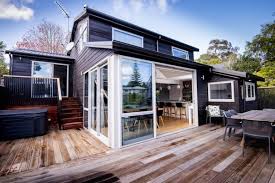House Extension option for homeowners seeking to increase the space they have and enhance the functionality of their homes without the need to relocate. If you’re thinking about a modest addition or a major overhaul, understanding the essentials can simplify the process and ensure the success of your project.
1. Types of Extensions
House extensions can be found in a variety of types, each with its own objectives:
Single-storey Extensions: Perfect to add more living space, such as the addition of a bigger kitchen or new lounge space. These extensions usually extend from the rear or side of the home.
Double-Storey Extensions: They are a combination of ground and first floor space, making them ideal to add bathrooms or bedrooms. They can greatly enhance the overall size of the home.
Loft Conversions: By converting your attic area, you could build an additional bedroom or office. This option is less invasive to the existing structure but requires a suitable roof height and proper insulation.
The conservatories as well as the orangeries use lots of glass to create bright areas, ideal for lounges or dining areas. Orangeries often include brickwork for more of a seamless look.
2. Planning Permission and Building Regulations
Before starting any extension project it is essential to know the local regulations for planning. In many instances, you may need planning permission, particularly for larger or more complex extensions. The regulations can differ based on the area you live in and so make sure you check with your local council or a planner.
Building regulations ensure that construction meets safety standards. The compliance with these regulations is required and covers issues such as structural integrity, insulation, and fire safety. A licensed architect or builder can help navigate these requirements.
3. Design and Budget
The process of planning a house extension requires extensive planning. Think about how the space will fit with your current home and the way it will be utilized. Get an architect or designer to help visualize the extension and make sure it will complement the existing structure.
Budgeting is an essential element of the planning process. Costs vary greatly based on the dimensions of the extension, materials used, and extent of the design. It is recommended to obtain several estimates from contractors and allocate a contingency fund for unexpected costs.
4. Choosing the Right Builder
A reputable builder’s choice is essential for a successful extension. Find builders who have experience in house extensions and check their references. Be sure that they’re registered and insured. Communication in a clear and well-defined contract can prevent confusion and ensure that the project stays on track.
5. Impact on Property Value
An effective house extension will substantially increase the value of your property. It is important to ensure that the extension is in line with the overall style and size of your home. If they’re too big or poorly designed, extensions may not produce the returns you’re hoping for.
In conclusion, house extensions are a great method to improve your living space as well as increase the functionality of your home. Through understanding the various types of extensions as well as making plans for permissions, budgeting and selecting the right professional so that you can make informed decisions and achieve a successful result.


